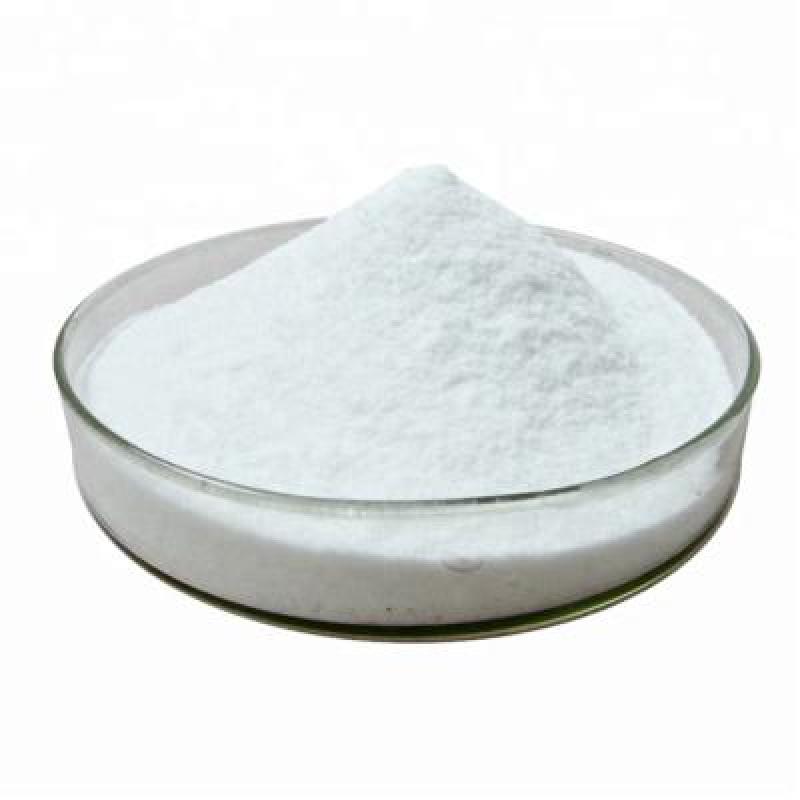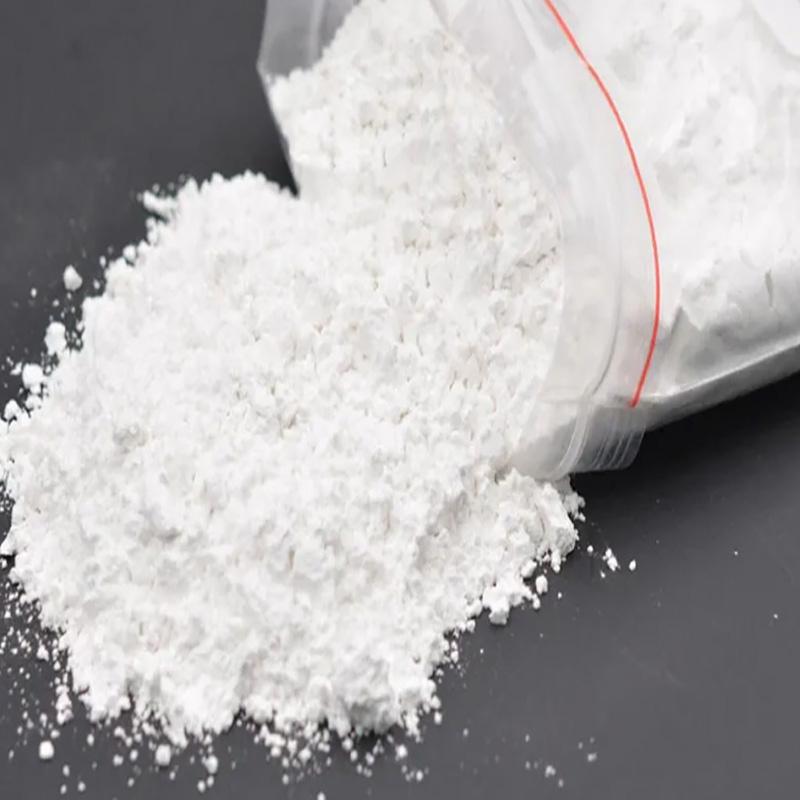Common name: AvermectinChemical name:abamectin (combination of avermectin B1a and avermectin B1b) Molecular formula: C49H74O14Structural formula: Molecular weight: 887.11CAS No. : 71751-41-2Product description:It can kill mites and insects, but not eggs. The mechanism of action is different from the general insecticide is to interfere with neurophysiological activities, stimulate the release of γ -aminobutyric acid, and aminobutyric acid on arthropod nerve conduction inhibition.
Contacta ahora
Product description:it can kill mites and bugs, but now not eggs. the mechanism of movement is different from the overall insecticide is to intrude with neurophysiological sports, stimulate the discharge of γ -aminobutyric acid, and aminobutyric acid on arthropod nerve conduction inhibition. person mites, nymphs and insect larvae display paralysis after touch with avermectin, do not circulate or feed, and die in 2 ~ 4 days. the lethal effect of abamectin is slow as it does not cause speedy dehydration of insects.
Contacta ahora
Common name: EMAMECTIN-BENZOATEChemical name:(4''R)-4''-DEOXY-4''-(METHYLAMINO)AVERMECTIN B1 BENZOATE Molecular formula: C49H77NO13Structural formula:Molecular weight: 888.13CAS No. : 155569-91-8Product description:Emamectinbenzoate, emamectinbenzoate for short, It is the result of the derivatization study on the hydroxyl group of 4 "-(α -1-zetan fructose-group)-α -1-zetan fructose by Merck in 1984.
Contacta ahora
Product description:Imidacloprid is a systemic insecticide belonging to a category of chemicals referred to as the neonicotinoids which act on the significant apprehensive system of bugs. the chemical works via interfering with the transmission of stimuli in the insect nervous machine. in particular, it causes a blockage of the nicotinergic neuronal pathway. by blockading nicotinic acetylcholine receptors, imidacloprid prevents acetylcholine from transmitting impulses between nerves, ensuing inside the insect's paralysis and eventual death.
Contacta ahora
Product description:Metalaxyl is an acylalanine fungicide with systemic feature.[3] its chemical name is methyl n-(methoxyacetyl)-n-(2,6-xylyl)-dl-alaninate. it may be used to govern pythium in a number of vegetable plants, and phytophthora in peas.
Contacta ahora
Common name: NICOSULFURONChemical name: 1-(4,6-Dimethoxypyrimidin-2-yl)-3-(3-dimethylcarbamoyl-2-pyridylsulfonyl)urea 2-(4,6-Dimethoxypyrimidin-2-ylcarbamoylsulfamoyl)-N,N-dimethylnicotinamideMolecular formula: C15H18N6O6SStructural formula:Molecular weight: 410.4CAS No. : 111991-09-4Product description:Nicosulfuron is a systemic and conductive herbicide, which can be absorbed by the stems, leaves and roots of plants and quickly transmitted.
Contacta ahora
Common name: Tribenuron-MethylChemical name: Methyl2-(3-(4-methoxy-6-methyl-1,3,5-triazin-2-yl)3-methylureidosulphonyl)benzoateMolecular formula: C15H17N5O6SStructural formula: Molecular weight: 395.39CAS No. : 101200-48-0Product description:This product is a sulfonylurea herbicide, used to control broad-leaved weeds in grasses such as cow chickweed, Lavender grass, Maijiagong, red lacquer, big melon grass and so on.Physical and chemical properties:This product is a white solid. m.p.141℃, vapor pressure 0.036×10-3Pa (25℃).
Contacta ahora
Common name: PendimethalinChemical name:N-(1-ethylpropyl)-2,6-dinitro-3,4-xylidineMolecular formula: C13H19N3O4Structural formula:Molecular weight: 281.31CAS No. : 40487-42-1Product description:Pendimethalin is an herbicide of the dinitroaniline class used in premergence and postemergence applications to control annual grasses and certain broadleaf weeds. It inhibits cell division and cell elongation.
Contacta ahora
Common name: CLOPYRALIDChemical name: 3,6-dichloropyridine-2-carboxylic acidMolecular formula: C6H3Cl2NO2Structural formula: Molecular weight: 192CAS No. : 1702-17-6Product description:Clopyralid is a systemic phytohormone-type herbicide, which is a product of Dow Company in the United States. It has good herbicidal effects and strong selectivity. Entered the U.S. market in 1987 to control annual or perennial broad-leaved weeds in corn and sugar beet fields.
Contacta ahora
Glufosinate is a wide-spectrum herbicide that is used to govern essential weeds consisting of morning glories, hemp sesbania (sesbania bispinosa), pennsylvania smartweed (polygonum pensylvanicum) and yellow nutsedge just like glyphosate.
Contacta ahora
Common name: CarbendazimChemical name: Methyl (1H-1,3-benzimidazol-2-yl)carbamateMolecular formula: C9H9N3O2Structural formula:Molecular weight: 191.19CAS No. : 10605-21-7Product description:Carbendazim is a widely used, systemic, broad-spectrum benzimidazole fungicide and a metabolite of benomyl. It is also employed as a casting worm control agent in amenity turf situations such as golf greens, tennis courts etc.
Contacta ahora
Common name: FIPRONILChemical name: 5-amino-1-[2,6-dichloro-4-(trifluoromethyl)phenyl]-4-[(trifluoromethyl)sulfinyl]-1H-pyrazole-3-carbonitrileMolecular formula: C12H4Cl2F6N4OSStructural formula: Molecular weight: 437.15CAS No.
Contacta ahora
Product description:Bifenthrin is a pyrethroid insecticide. it's far extensively used towards ant infestations, consisting of the invasive pink fireplace ant, by influencing its frightened machine. it has a high toxicity to aquatic organisms.Bifenthrin is poorly soluble in water and often remains in soil. Its residual half-life in soil is between 7 days and 8 months, depending on the soil type, with a low mobility in most soil types. Bifenthrin has the longest known residual time in soil of insecticides currently on the market. It is a white, waxy solid with a faint sweet smell.
Contacta ahora
Thiamethoxam is a systemic insecticide in the class of neonicotinoids. It has a broad spectrum of activity against many types of insects. Thiamethoxam can be used as a seed dresser.Thiamethoxam is a broad-spectrum, systemic insecticide, which means it is absorbed quickly by plants and transported to all of its parts, including pollen, where it acts to deter insect feeding.[citation needed] An insect can absorb it in its stomach after feeding, or through direct contact, including through its tracheal system.
Contacta ahora
Product description:Fenvalerate is a synthetic pyrethroid insecticide. it is a aggregate of 4 optical isomers that have one-of-a-kind insecticidal sports. the 2-s alpha (or ss) configuration, referred to as esfenvalerate, is the maximum insecticidally lively isomer. fenvalerate includes about 23% of this isomer.Fenvalerate is an insecticide of moderate mammalian toxicity. In laboratory animals, central nervous system toxicity is observed following acute or short-term exposure.
Contacta ahora
Common name: DicambaChemical name:3,6-Dichloro-2-methoxybenzoic acidMolecular formula: C8H6Cl2O3Structural formula:Molecular weight: 221.04CAS No. : 1918-00-9 Physical and chemical properties:The pure product is white crystal, m.p. 114~116℃, flash point 150℃, decomposes at 200℃, relative density 1.57 (25℃), vapor pressure 0.5Pa (100℃). Solubility at 25°C: 922g/L ethanol, 760g/L isopropanol, 810g/L acetone, 130g/L toluene, 260g/L dichloromethane, 1180g/L dioxane, 6.5g/L water.
Contacta ahora
Common name: AlachlorChemical name: 2-chloro-N-(2,6-diethylphenyl)-N-(methoxymethyl)acetamide; Molecular formula: C14H20ClNO2Structural formula:Molecular weight: 269.77CAS No.
Contacta ahora
Product description:Chlorpyrifos (CPS), also known as Chlorpyrifos ethyl, is an organophosphate pesticide used on crops, animals, and buildings, and in other settings, to kill a number of pests, including insects and worms. It acts on the nervous systems of insects by inhibiting the acetylcholinesterase enzyme. Chlorpyrifos was patented in 1966 by Dow Chemical Company.Structural formula:Molecular weight: 350.59CAS No. : 2921-88-2 Chlorpyrifos is considered moderately hazardous to humans by the World Health Organization based on its acute toxicity.
Contacta ahora
Structural formula:Molecular weight: 419.9CAS No. : 51630-58-1Product description:Fenvalerate is a synthetic pyrethroid insecticide. It is a mixture of four optical isomers which have different insecticidal activities. The 2-S alpha (or SS) configuration, known as esfenvalerate, is the most insecticidally active isomer. Fenvalerate consists of about 23% of this isomer.Fenvalerate is an insecticide of moderate mammalian toxicity. In laboratory animals, central nervous system toxicity is observed following acute or short-term exposure.
Contacta ahora
Usage:Deltamethrin is a highly effective insecticide.
Contacta ahora
Common name: FenpropathrinChemical name: [cyano-(3-phenoxyphenyl)methyl] 2,2,3,3-tetramethylcyclopropane-1-carboxylateMolecular formula: C22H23NO3 Structural formula:Molecular weight: 349.42CAS No. : 39515-41-8 Product description:Fenpropathrin, or fenopropathrin, is a widely used pyrethroid insecticide in agriculture and household. Fenpropathrin is an ingestion and contact synthetic pyrethroid.
Contacta ahora
Common name: TebuconazoleChemical name:1-(4-Chlorophenyl)-4,4-dimethyl-3-(1,2,4-triazole-1-yl-methyl)pentane-3-olMolecular formula: C16H22ClN3OStructural formula: Molecular weight: 307.82CAS No. : 80443-41-0Product description:Tebuconazole is a kind of high efficiency, broad spectrum, internal absorption triazole bactericidal pesticide, with three functions of protection, treatment, eradication, wide bactericidal spectrum, long duration of efficacy. It was found that tebuconazole, like all triazole fungicides, could inhibit the biosynthesis of ergosterol from fungicide.
Contacta ahora
Common name: EpoxiconazoleChemical name:1-[[3-(2-chlorophenyl)-2-(4-fluorophenyl)oxiran-2-yl]methyl]-1,2,4-triazole Molecular formula: C17H13ClFN3OStructural formula: Molecular weight: 329.76CAS No. : 135319-73-2Product description: Epoxiconazole is a fungicide active ingredient from the class of azoles developed to protect crops. In particular, the substance inhibits the metabolism of fungi cells infesting useful plants, and thereby prevents the growth of the mycelia (fungal cells). Epoxiconazole also limits the production of conidia (mitospores).
Contacta ahora
Common name: PropiconazoleChemical name:1-[[2-(2,4-dichlorophenyl)-4-propyl-1,3-dioxolan-2-yl]methyl]-1H-1,2,4-triazoleMolecular formula: C15H17Cl2N3O2 Structural formula:Molecular weight: 342.22CAS No. : 60207-90-1Product description:Propiconazole is a triazole fungicide, also known as a DMI, or demethylation inhibiting fungicide due to its binding with and inhibiting the 14-alpha demethylase enzyme from demethylating a precursor to ergosterol.
Contacta ahora

































